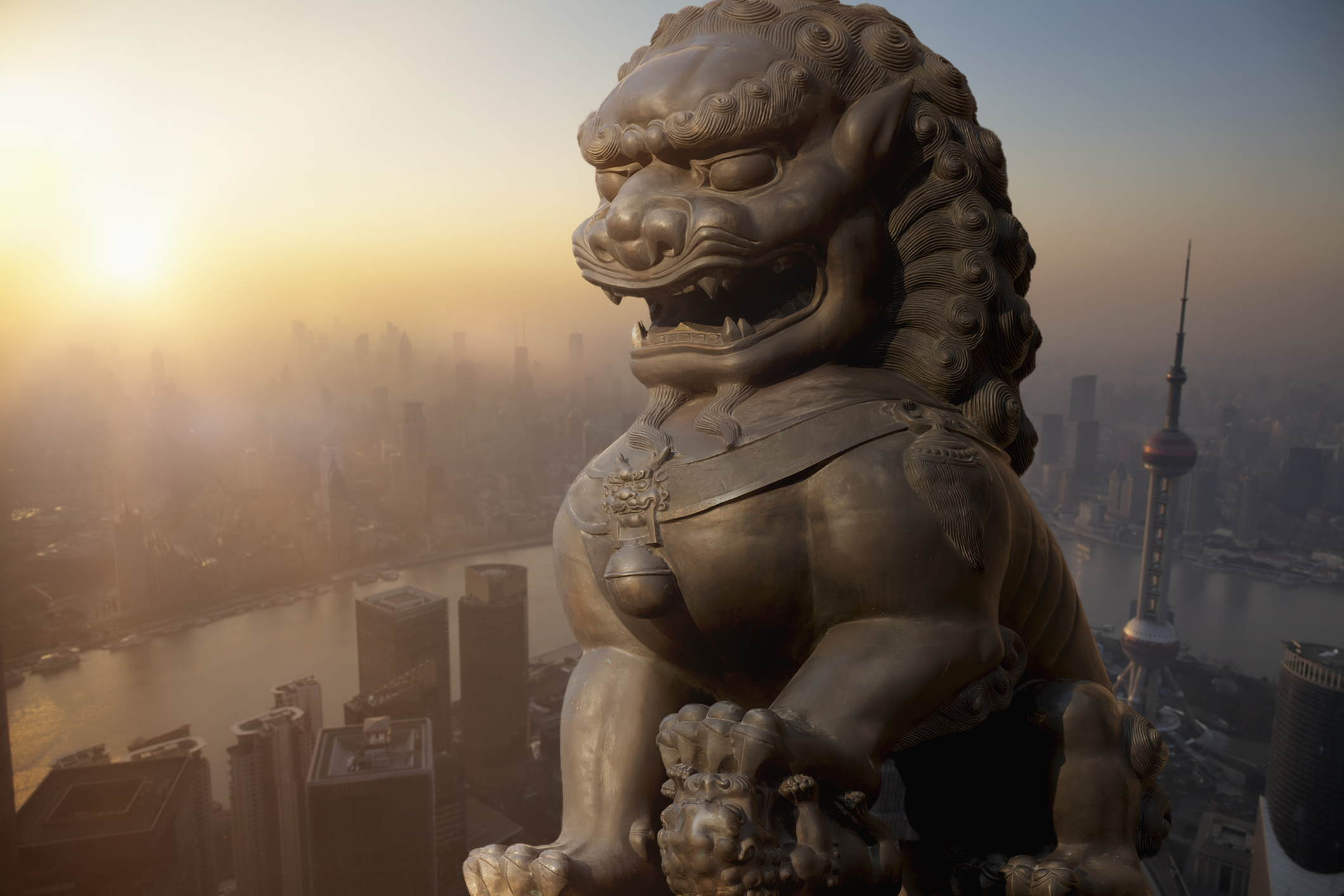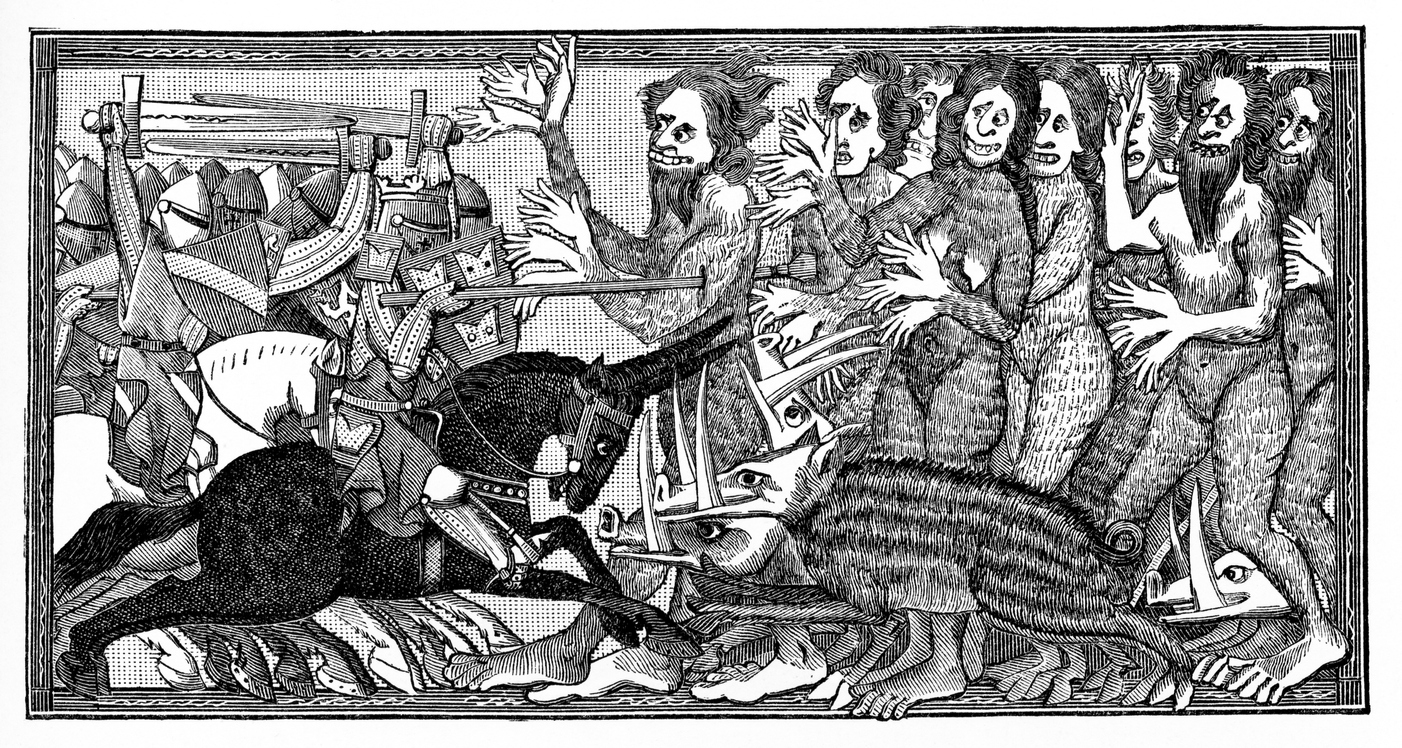
Students are drawn to monsters, so teachers use their interest in the weird and scary to their advantage and teach social studies themes through these figures. Many world cultures, past and present, have stories about historical monsters. Students will enjoy the interesting details about strange creatures and the myths associated with them. However, go beyond the obvious physical attributes and ask students why cultures have monsters and how these figures symbolize or reflect human fears, beliefs, and religions.
What do Modern Monsters Symbolize?
Begin by asking students about their favorite monsters from modern culture. Video games, movies, television, and books are full of zombies, vampires, werewolves, invading aliens, out-of-control intelligent computers, the Demogorgon from Stranger Things, and many more. Then, ask how that monster represents aspects of modern culture. You may need to provide some helpful hints or reference current events. For example, most modern zombies in media are created by an uncontrolled virus. Our modern fear of a fast-spreading disease threatening humanity seemed very distant until the recent COVID epidemic. Help students make this connection through whole-class or small group discussions about the pandemic versus zombie movies.
For an additional activity, try Zombie-Based Geography, a full-class simulation that allows students to use students’ natural desire to survive zombie assaults and then to apply those skills in a series of scenarios and geographical activities. Learn more here.
Tales of invading aliens are also popular in modern media. Extraterrestrials began to appear in science fiction in the 1950s. During that decade, new scientific discoveries were quickly changing the world. While most developments were positive, the discovery of the atomic bomb and the threat of the Cold War loomed large in our fears. Many asked if it was possible science or another culture would destroy our nation and the world. With UFOs and extraterrestrial life trending in the media, this is an essential topic that could easily engage a class discussion about current and historical events.
Our fears of the rapid development of technology and artificial intelligence have inspired modern dystopias with robots, evil machines, and malfunctioning computers. For example, in The Matrix movie series (1999, 2003, 2021), an artificial intelligence system imprisons humans and traps them in an artificial simulation of the real world. Mary Wollstonecraft Shelley’s 1818 novel Frankenstein used the same theme: technology gone wrong creates a dangerous monster.

Historical Monsters
After exploring the symbolism of modern monsters with students, explore the monstrous figures from the past. In Western culture, the word “monster” in English, French, Italian, and Spanish originates in the ancient Latin word monstrum, which means a “warning, something with exceptional qualities, monstrous creature, or wicked person.” In the Middle Ages, a monster could also describe a disfigured person or a person from another country or culture.
Historical monsters often symbolize one, several, or all of the qualities of the ancient and medieval word “monster.” For example, ancient and medieval maps depicted threatening monsters on both the land and seas of unexplored regions of the earth. Sea monsters such as ancient Greek sirens, Charybdis, and Scylla served as a warning that sailing into the unknown was dangerous. According to legend and myths, many historical monsters were thought to live in forests. Enchanted forests in folklore tales warn of the dangers of an unknown place. An example that many students may recognize is The Forbidden Forest from the Harry Potter series, which contains many monsters with historical roots. Teachers may ask students to use their recall skills to make lists of the monsters they remember from the novels.
Undead monsters such as mummies, ghosts, demons, and vampires symbolized unknown scientific explanations for human afflictions or ignorance of the process of the decomposition of the body. Historically, sickness, disease, death, physical deformities, or strange human behavior was attributed to monsters.
Nearly every culture had dragons as part of their lore, and, until modern times, dragons were portrayed as evil and dangerous. They killed and ate humans, strangled animals as large as elephants with their tails, and destroyed communities by breathing poison or fire. Dragons had to be killed or defeated by gods, saints, angels, or mortal heroes. The symbolism of a dragon varied somewhat according to the story and the culture. For example, in the Middle Ages, dragons were religious symbols of evil and temptations to be defeated by good Christians.
Other historical monstrous figures serve as warnings. Shape-shifting monsters such as a Skin-walker, from Navajo culture, or Rakshasa, featured in historical Hinduism, had the ability to become or possess animals or humans. Additionally, werewolves symbolized the evil or animal urges inside of every human.
Classroom Activity: Create Your Own Monster
After a study of how a culture’s evil monsters symbolize its worst fears, represent the unknown, or serve as a warning or moral example, ask students to create new monsters with these purposes. To best serve students with a wide variety of skills, provide options to draw or describe their creatures. Be sure to require students to explore the symbolism of their creations and draw parallels to other cultures.
As a concluding activity, students can also enjoy this fun, 10-question online quiz based on the creatures described in a medieval bestiary, a book of describing real and mythical creatures and their religion symbolism. They can test their skills learned and additionally learn about other monsters from medieval times.
Zombie-Based Geography can peak the interest of your elementary and middle school students in place-based lessons
References
“The Evil, Medieval Ancestors of Modern Dragons” https://teachingwiththemes.com/index.php/2019/12/21/evil-medieval-ancestors-of-modern-dragons/
Oxford English Dictionary, s.v. “monster, n., adv., & adj.”, July 2023. https://doi.org/10.1093/OED/3193780999
Cynthia W. Resor is a recently retired social studies education professor and former middle and high school social studies teacher. Her dream job? Time-travel tour guide. But until she discovers the secret of time travel, she writes about the past in her blog, Primary Source Bazaar. Her three books on teaching social history themes feature essential questions and primary sources: Discovering Quacks, Utopias, and Cemeteries: Modern Lessons from Historical Themes; Investigating Family, Food, and Housing Themes in Social Studies and Exploring Vacation and Etiquette Themes in Social Studies.
